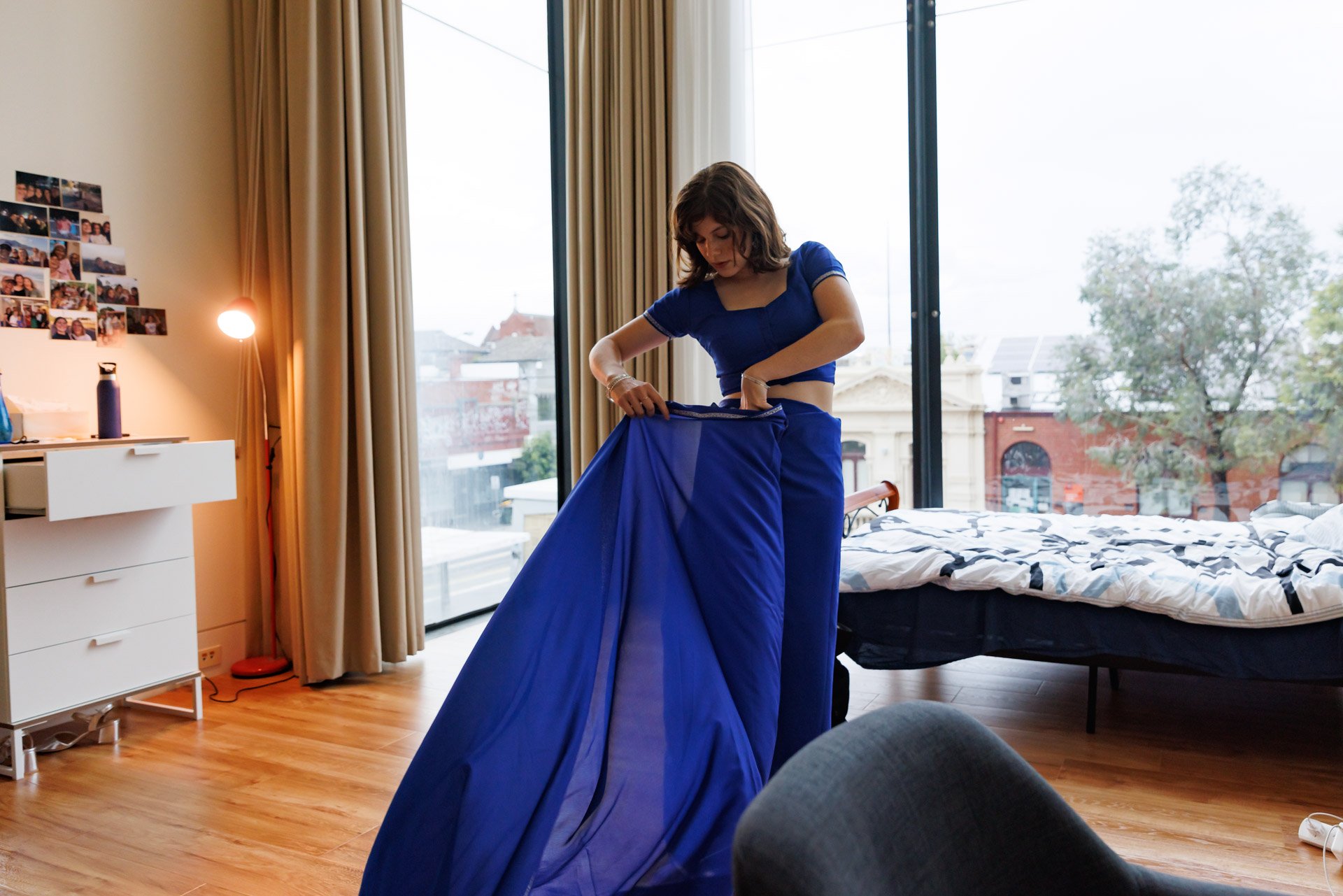SOUND
The grey area
My work for Arts Gen x H_ME W_RK, The grey area, invites listeners into conversations with members of my family; conversations that seek to connect, contextualise, and communicate questions of identity, cross-border mobility, and intergenerational knowledge and memory.
The work is an oral history comprising interviews with my father and his sister (my aunty), their parents (my grandparents), and my two younger sisters, collaged to recreate the cacophony of one of our many family gatherings at which everyone talks with, over, and alongside each other: six conversations at once, each unique yet interconnected and entwined, everyone a part of every conversation at once.
The grey area challenges the listener to actively engage with the voices and our stories. It is another step towards articulating and unravelling my identity and how I may continue to understand and proudly hold my heritage.
—
I love my family more than words can express, and am honoured by their trust and generosity in making this work.
I would like to acknowledge that these words were spoken and recorded in Naarm and Meanjin, on the unceded lands of the Wurundjeri Woi Wurrung people of the Kulin Nation, and the Turrbal and Yuggera people.
PERFORMANCE
The blue area
The blue area calms; it uncovers and stills; it holds. Merinda Dias-Jayasinha invites audiences into her bedroom space; a place of dressing, a place of undressing. Born and raised in Brisbane/Meanjin with Sri Lankan/Australian heritage, Dias-Jayasinha is a creative artist and musician whose practice explores heartfelt and lyrical storytelling, genre-blurring compositions, and the melodic and textural potential of the voice.
In this work, Dias-Jayasinha expands upon The grey area, a previous sound work that explored intergenerational memory and the inner turmoil that comes with living between two cultures. After the physical separation between her and her family during the pandemic and accompanying feelings of loss, Dias-Jayasinha developed a strong desire to actively preserve her family culture. In The blue area, the artist reconciles her feelings of uncertainty and cultural erasure — arriving at a place of peace and tranquillity; feeling less two halves of something, more a whole. The artist sees this feeling manifest in the colour blue.
With recorded spoken reflections on cultural heritage and erasure, familial knowledge, and the artist’s own drive to embrace her Sri Lankan/Australian identity, this work sees the artist getting ready in a saree, gifted to her by her Granna, in her bedroom. Audiences are challenged to question initial perceptions of appearances so that the safety and intimacy of a bedroom may extend out to all other spaces. The work is another step towards the artist articulating and unravelling her identity and a means to continue to understand and proudly hold her heritage.
Performance as part of Let’s Take Over 2022, facilitated by Darebin Arts Speakeasy




